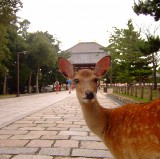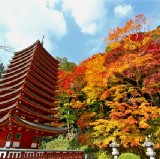Todaiji Temple: Meet the World’s Largest Buddha
The great UNESCO World Heritage temple in Nara Prefecture
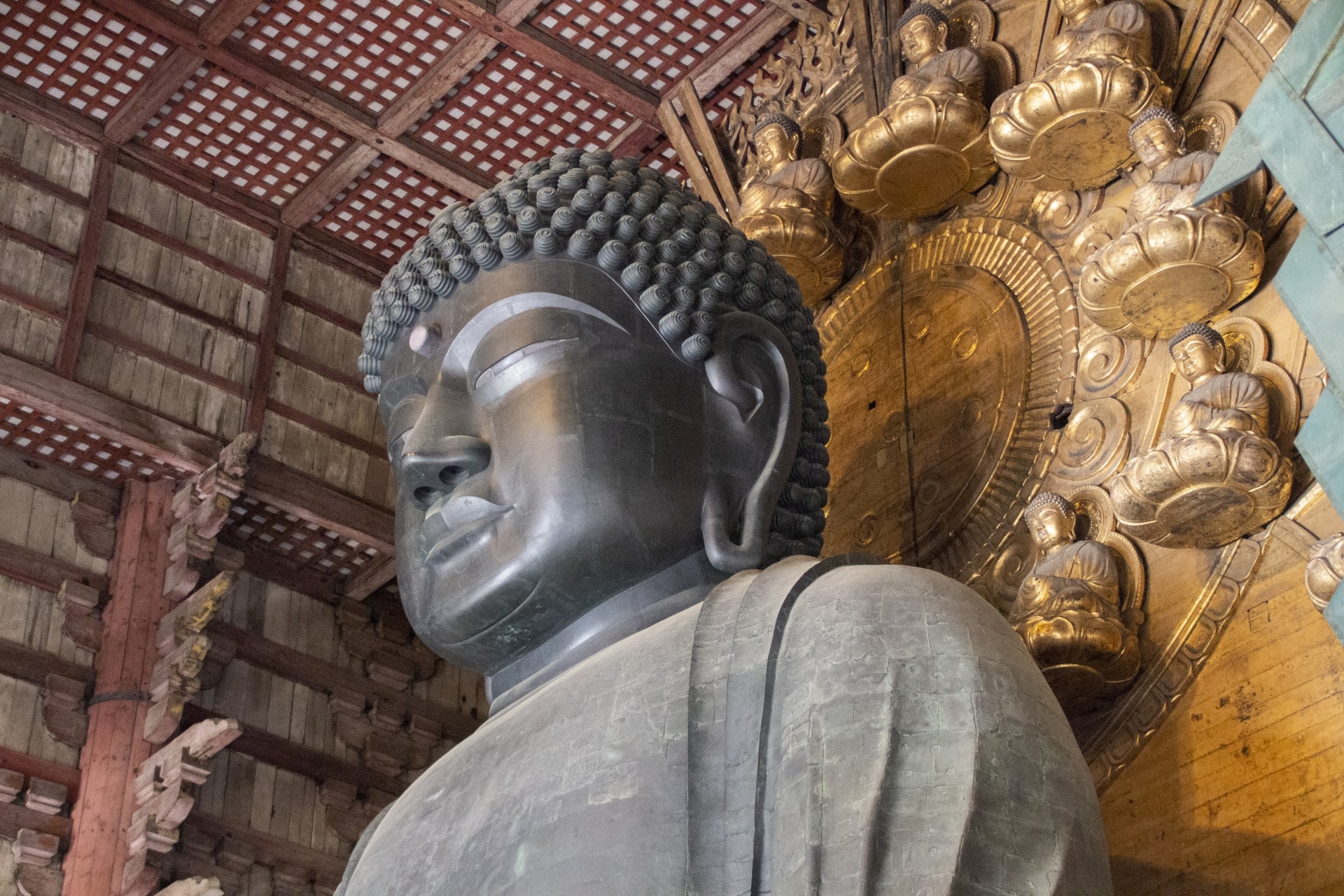
Visit Todaiji, one of the most important temples in Japan, and meet the world’s biggest bronze Buddha and adorable deer!
*Please note that this article contains affiliate links.
What is Todaiji Temple?
Todaiji Temple (東大寺) is a Buddhist temple complex located in Nara City, Nara Prefecture. It’s one of the most important temples in Japanese history and a top tourist attraction in Western Japan. The temple was one of the Seven Great Temples of Nara, the powerful and influential seven Buddhist temples during the Nara period.
Todaiji Temple was founded in the early 8th century by the order of Emperor Shomu. It was constructed in 738 and opened in 752. The temple went under reconstruction several times, including the major one in 1709, including the current hall with the Great Buddha.
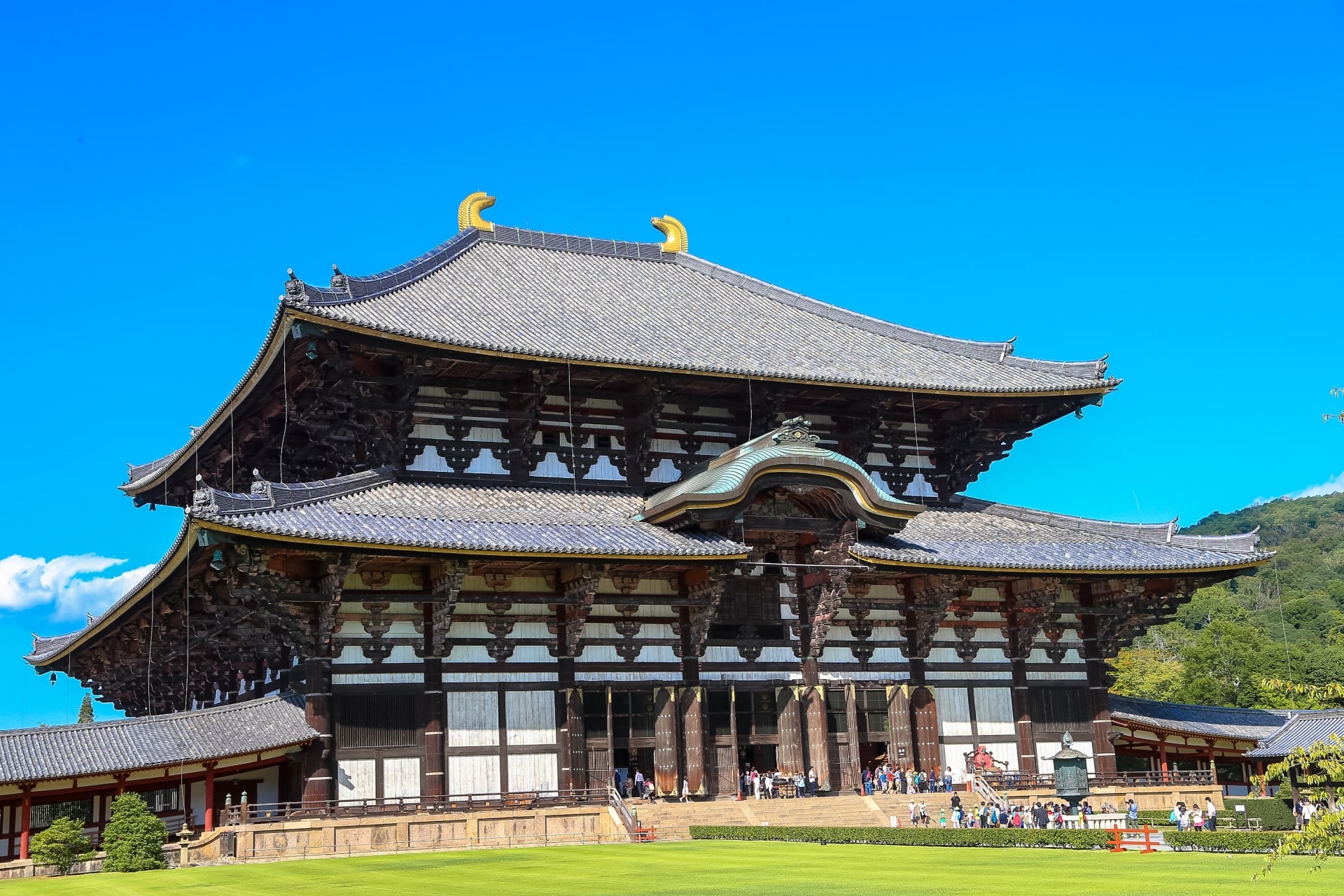
The Great Buddha of Nara
The temple is best known for the world’s largest bronze statue of the Buddha, a.k.a. The Great Buddha of Nara (Nara no Daibutsu “奈良の大仏” in Japanese), which is placed in the Great Buddha Hall (Daibutsuden “大仏殿” in Japanese). During the Edo period, it was counted as one of the three greatest Buddha statues in Japan, along with the Great Buddha of Kamakura and the Great Buddha of Kyoto (which no longer exists).
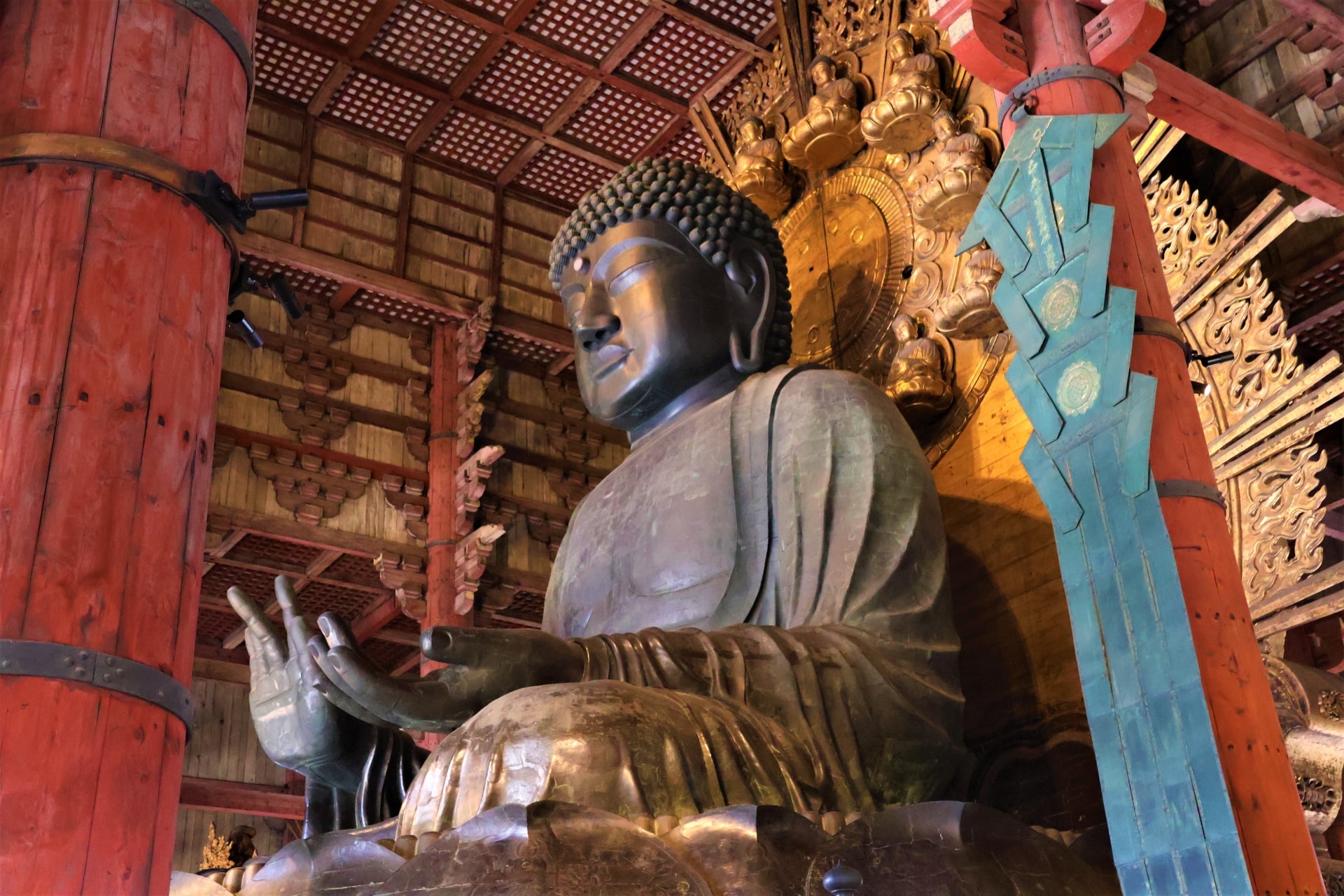
The dimensions of the Buddha statue are: Height: 14.98 m (49 ft 2 in), Face: 5.33 m (17 ft 6 in), Eyes: 1.02 m (3 ft 4 in), Nose: 0.5 m (1 ft 8 in), Ears: 2.54 m (8 ft 4 in). The Great Buddha Hall is 57 m (187 ft) long, 50 m (160 ft) wide, and 49 m (161 ft) high, and it was the world’s largest wooden building until 1998.
The temple was designated as a UNESCO World Heritage Site in 1998 as part of the “Historic Monuments of Ancient Nara”, together with seven other sites, including temples, shrines, and the forest in Nara. The temple also houses a number of national treasures and cultural properties, including structures, paintings, sculptures, and documents.
Other Highlights
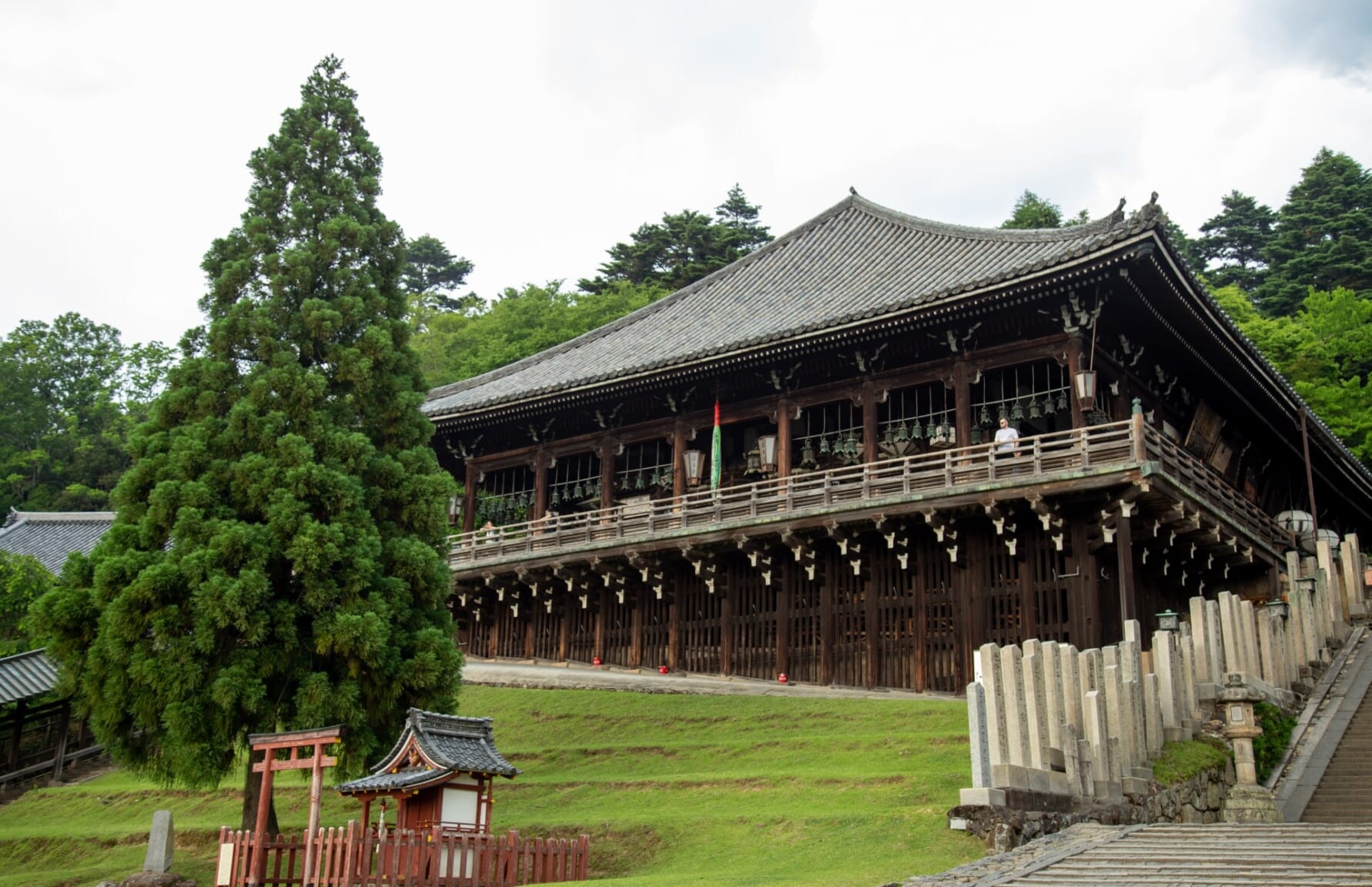
Nigatsudo Hall (二月堂) is another important structure and a national treasure in Todaiji Temple. It’s located on the east hillside of the Great Buddha Hall and has a balcony that offers a stunning panoramic view of the city. The hall is the site of the Omizutori ceremony (a festival of water and fire), which is held in March every year.
Along the temple complex, deer are another tourist attraction and a famous symbol in Nara. Nara Park, the grounds of Todaiji Temple are home to over 1,000 wild deer that freely roam in the park and have been designated as a natural treasure of Japan.
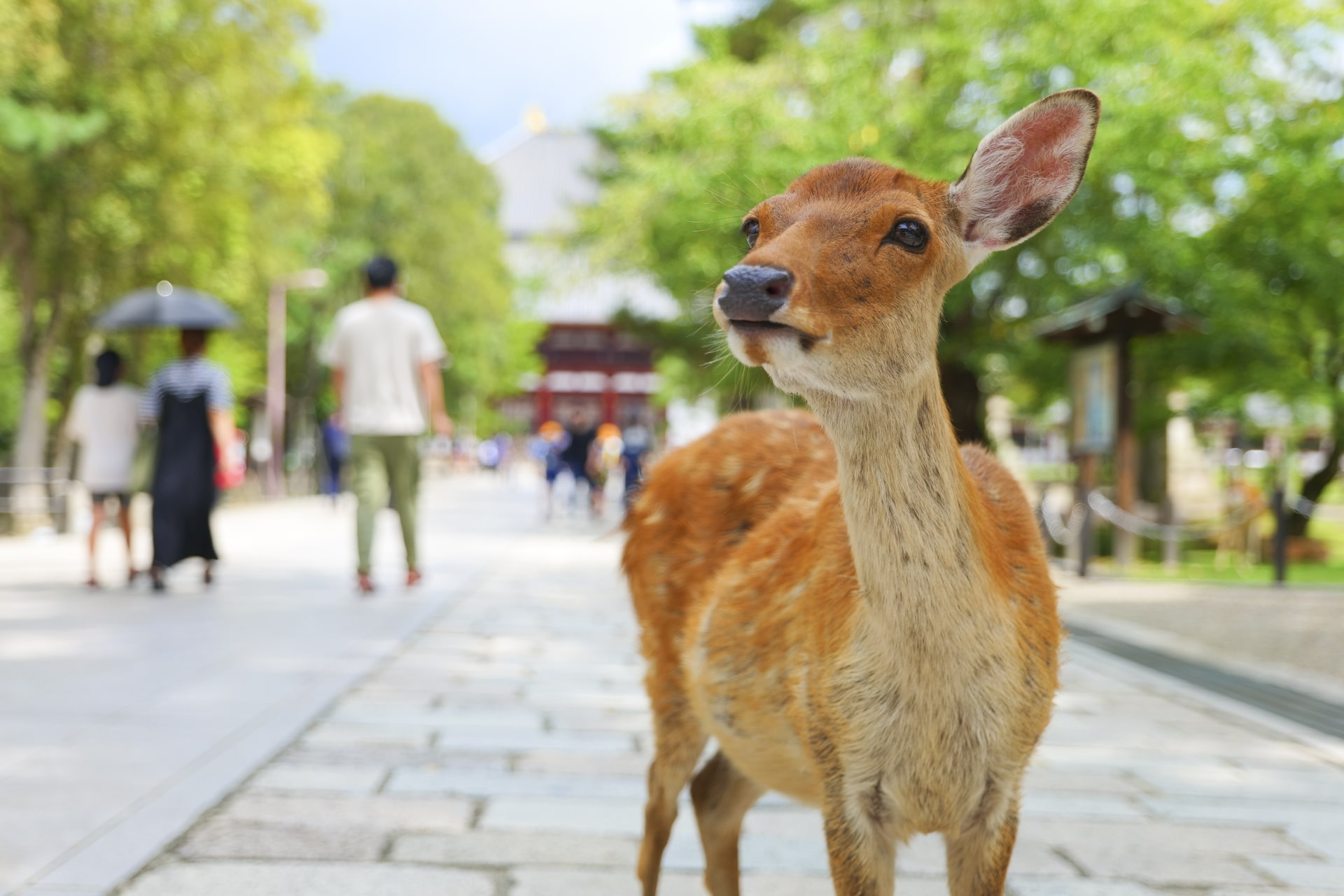
Getting to Todaiji Temple
If you are traveling from Kyoto or Osaka, the easiest way is by train. From Kyoto Station, take the JR Nara Line to Nara Station, a journey that takes approximately 45 minutes. From Osaka, the Kintetsu Nara Line will bring you to Kintetsu Nara Station in about 40 minutes.
Once you arrive, the temple is a pleasant 20-30 minute walk from either station. The route takes you through Nara Park, famous for its friendly, and occasionally assertive, population of freely roaming deer. Alternatively, local buses run frequently from the stations to Todaiji Daibutsuden bus stop, dropping visitors just a short walk away from the temple’s main gate.
Clear signage in English and Japanese ensures that even first-time visitors can navigate easily without much fuss.
 Access Access |
30 mins walk from Kintetsu Nara station |
|---|---|
 Business Hours Business Hours |
7:30~17:30 (April to October), 8:00~17:00 (November to March) |
 Price Price |
600 JPY |
 Official Website Official Website |
http://www.todaiji.or.jp/english/index.html |
If you’re planning a short visit to Nara, I highly recommend joining the “Nara Half Day Trip Walking Tour.” This tour allows you to explore the highlights of Nara while learning about the city’s rich history from a local guide. You can meet the largest Buddha statue, interact with adorable deer, visit a magnificent shrine, and explore the neighborhood, all within just half a day!
Check the link below for more details about the tour!
Thanks for reading! For more information about travelling in Nara and other cities in Western Japan, please check out these articles below!
Written by
"The world is my oyster." As a dedicated globetrotter and hammock enthusiast, I’ve spent years chasing new experiences, collecting stories, and discovering the world’s most incredible destinations. Born and raised in Japan, I’ve always had a deep connection to my roots, but my love for adventure has led me to spend over a decade exploring countries across the globe—from culture-rich cities to remote hideaways.
Travel isn't just a hobby for me; it's a lifestyle. I'm constantly searching for new ways to fuel my wanderlust. Over the years, I’ve developed a wealth of knowledge and a treasure trove of tips that make traveling more enjoyable, practical, and meaningful.
Through my experiences, I've come to appreciate not only the beauty of travel but also the importance of understanding diverse cultures, embracing the unfamiliar, and stepping out of my comfort zone. My travels have shaped who I am today, and I’m excited to share those lessons with others.
With Japan Web Magazine, I aim to offer practical advice, insider tips, and firsthand stories that help travelers navigate their journeys to Japan or setting off on a global adventure. From hidden gems in Japan to travel hacks that make any trip smoother, I hope my insights inspire you to embark on your own adventures and make the most of every moment. Let’s explore the world together!
You can also find my stories here ▶ https://medium.com/@nahobm






